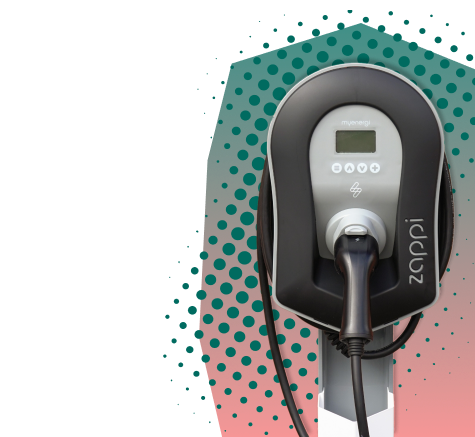The 2022 Employee Benefits Guide In The US

Choosing an employee benefits package in today’s candidate-driven market is a critical challenge for businesses of all sizes. But never are the challenges more difficult—or the stakes higher—than when a company first takes shape. What you provide in addition to a salary can go a long way toward assisting your recruitment efforts. The perfect mix of extras can mean the difference between your best candidates joining your team or turning down your job offer.
Looking at the statistics, it’s clear how vital great benefits are in the United States. The average medical bill is $2-3k and emergency medical costs account for 62% of all personal bankruptcies filed; employees suffering burnout ranked paid time off as the number one benefit that would have been most helpful towards their health, particularly during the global pandemic.
Whilst historical benefits like health insurance, paid time off, and retirement plans ensure that employees join your early-stage company, stay with you as your business grows, and perform well, other perks can be offered too that do not require a big chunk of your recent funding and create an environment that will attract and retain talent.
Understandably, there isn’t a one-size-fits all answer to what benefits to provide your employees. It all comes down to what your startup values and the culture you want to build. But a starting point nonetheless can help get you off to a great start. This article, in conjunction with our Employee Benefits Package In Europe, breaks down the most favoured employee benefits in the United States, chosen by employees themselves. To check out how the US stacks up against Europe, check out the following resource for a top-line comparison.
But First, Why Offer Employee Benefits As A Startup?
According to the Society of Human Resource Management (SHRM), 92% of employees regard employment benefits to be as important for their overall job satisfaction. Almost one-third of employees also named work benefits as the key reason for seeking a job outside their organization and for opting to stay at their current employment, too.
Employee benefits also help you retain high-performing employees without having to continue to spend on exceptionally high pay raises. Particularly for startups, it is common and often expected of them to offer low salaries and high perk packages, such as equity, to save money whilst compensating against bigger companies.
On that note, benefits that larger organisations typically do not offer, such as work-from-anywhere choices, the possibility to own stock, and the ability to obtain hands-on training, may entice a potential hire when weighing the opportunity to work for a large corporation or a startup.
What Benefits Do Employees Value The Most?
Though “dress down Fridays” and free lunches are fun and loved, employee interest primarily stems from benefits that carry longevity. Benefits like PTO, health insurance, 401(k) plans and equity options can help startups to differentiate themselves. The following benefits are ranked top in the United States, taken from a study conducted by Glassdoor, as well as our research from our GreenTech clientele database.
-
Health Insurance
 Many employees are hesitant to choose a future at a company that doesn’t provide health insurance. This couldn’t be more attuned than in the US, with medical bills accounting for over half of all personal bankruptcies. Thankfully, in 2021, health care benefits were available to 71% of private industry workers and 54% of workers participated in the benefit.
Many employees are hesitant to choose a future at a company that doesn’t provide health insurance. This couldn’t be more attuned than in the US, with medical bills accounting for over half of all personal bankruptcies. Thankfully, in 2021, health care benefits were available to 71% of private industry workers and 54% of workers participated in the benefit.
It’s no secret that almost all large companies offer a health insurance plan in the US. Even the majority of small companies and startups, that face greater barriers to providing coverage, offer this benefit. These employer-sponsored plans cover two-thirds of all non-elderly Americans and cover the majority of working families’ expenses for health care costs and account for nearly a quarter of all national health spending.
Most plans cover visits to primary care doctors and specialists, hospitalization and emergency treatment. Alternative medical care, wellness, prescriptions, vision, and dental care coverage varies by plan and employer. There are ways to limit its cost, such as setting higher-than-average deductibles which lower employer premiums (the deductibles can be adjusted downward as financial stability improves).
-
Paid Time Off
Dating as far back as Ancient Egypt, paid time off (PTO) has been ranked as the second most valued benefit in Glassdoor’s study, despite the United States having no national mandate for paid holidays, vacation days or paid sick days. Instead, businesses rely on constructing their own policies. The Bureau of Labor Statistics reports that 76% of American workers have access to PTO, with many taking between 5 and 10 days per year.
While the federal Family and Medical Leave Act grants workers up to 12 weeks of unpaid leave, there is no federal legislation governing paid vacation minimums. This means that state laws and companies are responsible for regulating. Having said that, unlimited PTO has been adopted by more and more businesses in recent years, whereby workers can take as much time off as they like.
Only twelve states plus Washington DC currently have mandated paid sick leave. Maine and Nevada, which both passed laws in 2019, have the only policies which explicitly mention that state-mandated PTO is used for things other than illness. Employees in the American Northeast (which includes Maine, New York, Delaware, Massachusetts, Rhode Island, New Hampshire, Vermont, Connecticut, New Jersey and Pennsylvania) offer 18% above the national average, making it the greatest number of PTO days to employees. The same survey found that the Midwest and Southeast had the lowest number of PTO days.
-
401(k) Plan
 Offering a retirement plan as a core benefit is an excellent approach to retaining top talent. It demonstrates to them that you care about your employees not only now, but also in the future. One type of retirement savings plan offered by many American employers is a 401(k) plan. This plan allows employees to have a percentage of their monthly salary directly deposited into an investment account before federal and state taxes are withheld, with the employer matching the amount partially or entirely.
Offering a retirement plan as a core benefit is an excellent approach to retaining top talent. It demonstrates to them that you care about your employees not only now, but also in the future. One type of retirement savings plan offered by many American employers is a 401(k) plan. This plan allows employees to have a percentage of their monthly salary directly deposited into an investment account before federal and state taxes are withheld, with the employer matching the amount partially or entirely.
Long gone are plans that are complex and expensive, as technology advancements today have made retirement plans more accessible to smaller organizations, taking less time to set up whilst offering no or low-cost options.
For business owners, the tax savings and incentives offered through a 401(k) plan are immediately available to startup executives. In 2019, the government passed the SECURE Act, which gave startups with 401(k) plans three years’ worth of tax credits.
-
Equity Options
As mentioned briefly above, offering ownership as part of an employee’s remuneration package is anticipated among entrepreneurs. Yes, it is giving away part-ownership of your company, but for serval purposes. Firstly, it is a way for startups who, which is no secret, are strapped for cash in the early stages to compete with larger companies in terms of pay offerings. Secondly, by offering prospective employees a stake in the company’s future growth, with a clear time horizon of a payoff, employees act like owners and work harder to ensure the company scales.
For more details on what an equity package should look like, take a read of our article here.
The Employee Benefits New On The Block
 Between planning presentations and analyzing reports, employees don’t have much time to think about their basic needs at work. Offer practical perks at the office, such as breakfast, discounted gym memberships, day-care services, elder-care assistance, and laundry options, to alleviate some of that stress. Partnering with local suppliers can be a fantastic way to strengthen community ties while also ensuring that employees have access to essential services.
Between planning presentations and analyzing reports, employees don’t have much time to think about their basic needs at work. Offer practical perks at the office, such as breakfast, discounted gym memberships, day-care services, elder-care assistance, and laundry options, to alleviate some of that stress. Partnering with local suppliers can be a fantastic way to strengthen community ties while also ensuring that employees have access to essential services.
It wouldn’t be a complete employee benefits package without including the new normal; remote or flexible working. The pandemic has unleashed an entrepreneurial boom. Many businesses have realised its true potential and are encouraging employees to work from home or anywhere in the world. Recent statistics reveal more than 4.7 million people work remotely at least half the time in the United States and Upwork foresees 22% of the workforce (36.2million Americans) will work remotely by 2025.
One thing to keep in mind; do not underestimate the money and time it takes to administer and fund employee benefits. If a sizeable benefits program is in place, ensure someone is handling the day-to-day administrative details and is updating the program alongside accounting and tax rules changes. The best approach is to start with limited benefits and gradually expand them as the company grows profitable.
The Takeaway
Deciding on compensation policies for your startup means making some critical decisions. Budgets are tight so startups need to strike the right balance between making a significant effect and not breaking the bank. The wisest approach is to start slow, make enhancements incrementally, and to keep in mind the cash flow, taxation, and accounting implications of the choices you make.
If you have just set up your startup and would like some advice on how to attract and retain top talent, get in touch today!











